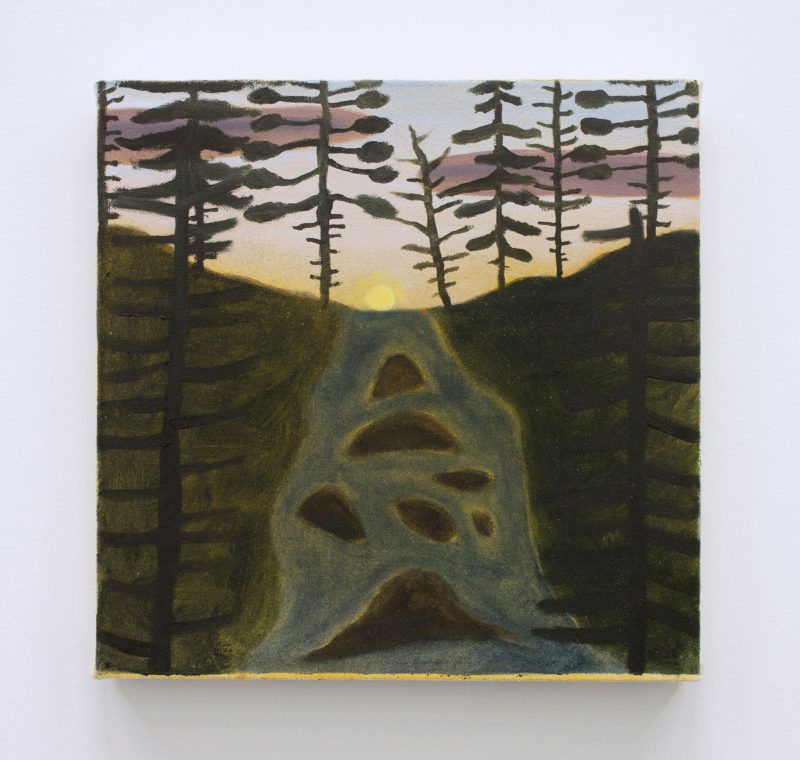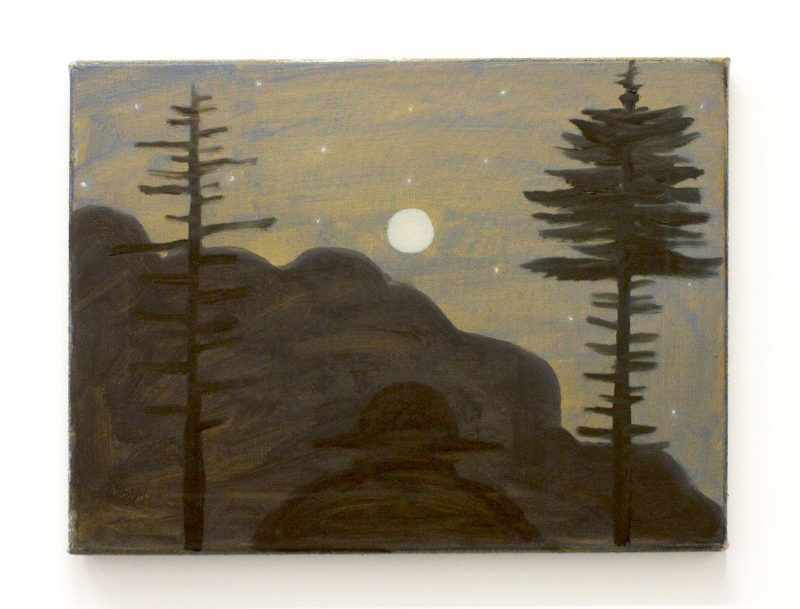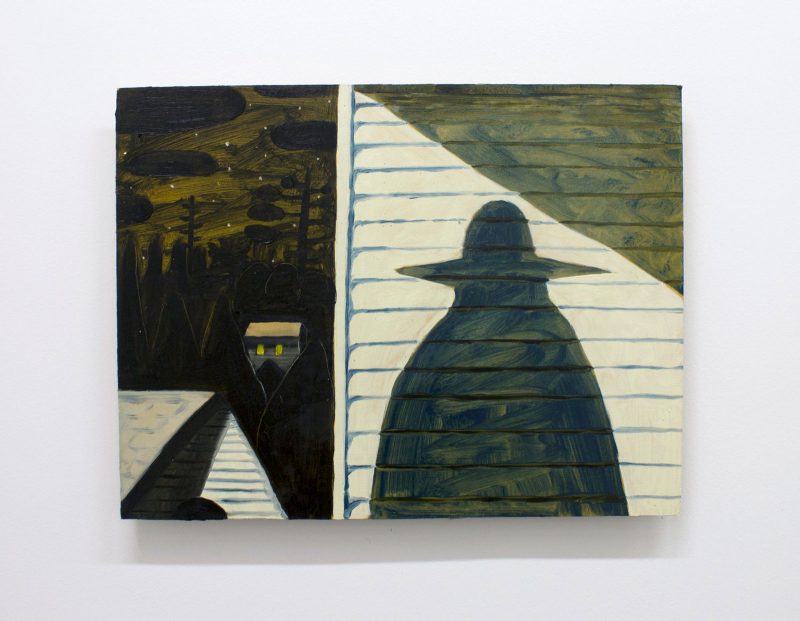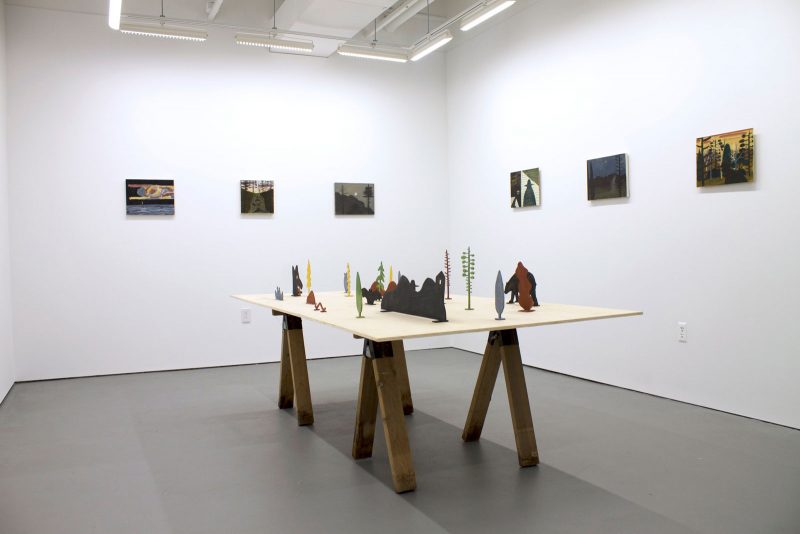
Romantic landscapes of the 19th century are fraught with fantasy. During the era of westward expansion, and prior to the proliferation of photography, painters such as Albert Bierstadt (1830-1902) held the keys to public perception of this military and settler-colonial enterprise. Collectively, these paintings portray American soil as god-given, prime real estate. They are high gloss, sanitized renditions of Manifest Destiny in which American Indians are not shown to be murdered or forcibly displaced, but simply erased, dissipated by the gleaming strokes of a brush and morning mist.
Often shown to the public in ticketed displays, these works were like theater of American expansion — entertainment and propaganda combined. Their choices of framing, distance, height and composition irrevocably influenced American landscape. These craggy peaks and sublime vistas have penetrated the depths of our cultural imagination — manifesting later in the photography of Ansel Adams right down to your computer’s desktop.
Portrait of the artist as a landscape
I recount this history because I have found a landscape painter who dodges the specter of nationalism that hovers over the American landscape. I was lucky to catch Stephen W. Evans’ exhibition “On Feelings and Strangeness” at the University of the Arts painting gallery last month. Though the show is now down, the thought of his paintings lingers. Absent are the stunning vistas and theatricality of Bierstadt, Church or Moran; in their place are Evans’ meditations on the imperfect eye and its psychological ghosts.
An alum of UArts, Evans now resides in Birmingham, Alabama. Like the romantic landscape painters before him, he does not attempt to capture the essence of a place, but rather foregrounds feelings. Although dark forests, mysterious geology, and rural architecture form the basis of his paintings, the term “landscape” may be misleading. They feel almost portrait-like, as the body of the painter is implicated in every panel.
The surfaces of Evans’ paintings are dry. The grain of canvas or wood is present, and thin, fluid paint is scumbled* lightly overtop. The corner of one painting has been knocked off —there’s a desire for imperfection.
A shadowy presence
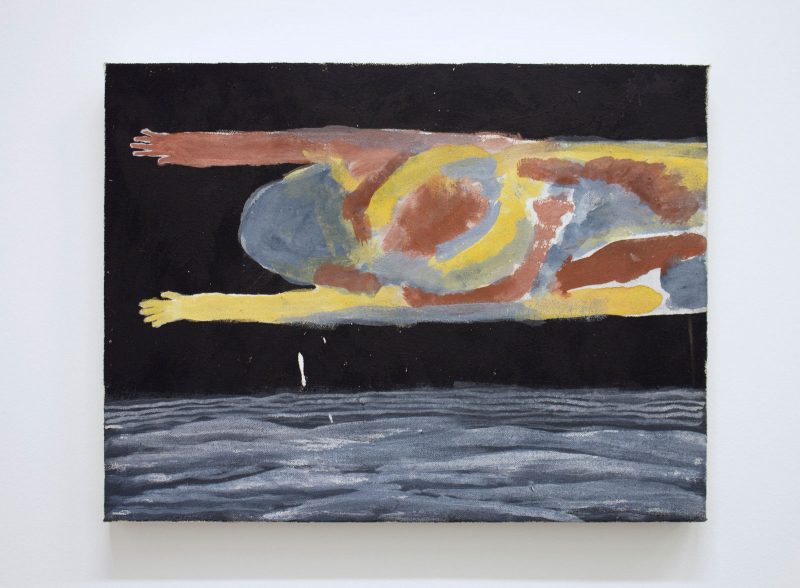
These works are quiet and sparsely populated, but occasional characters do appear. One such shadowy figure, in a wide-brimmed hat, feels both silly and dangerous, like one’s own shadow in an unexpected slant of light at night. It’s cast upon white siding, or as a silhouette against the dark mass of a mountain. In another painting, posted to his Instagram recently, Evans gives an innocuous scene of children running through a field an unsettling edge by titling it “Search Party.”
Evans’ landscapes are malleable. One of my favorites is “Dusk Falls,” a 12”x12” oil painting that transforms a waterfall into a wistful tapestry, or a blanket unfurling upon the rocks. Another gem is “God Hovering Over the Deep,” one of his most surreal paintings. A heavily abstracted body in red, yellow and blue soars above a dark, restless sea. His material wit is revealed through a drip of paint, scattered across the surface; it exists simultaneously as accident and as the image of gravity.
The American romantic notion of a “pure” land, untouched and god-given is troubling. Yet these small, intimate and subtle paintings have resuscitated my faith in a representation of American space that feels emotionally pure, where each work is an earnest articulation of individual experience. Humble things, these paintings approach a feeling rather than a specific location. Evans’ delicate, awkward touch renders images that set off a nostalgic chain-reaction in my head. There’s a rustic cabin in the woods, campfire tales. There are folk songs in these paintings, inaudible as they might seem.
“Stephen W. Evans: On Feelings and Strangeness” was on view at the University of the Arts painting gallery, October 4th-27th, 2018
*scumbling is a painting technique wherein a thin coat of opaque or semi-opaque color is applied with a nearly dry brush to create a dimming effect.
More Photos
